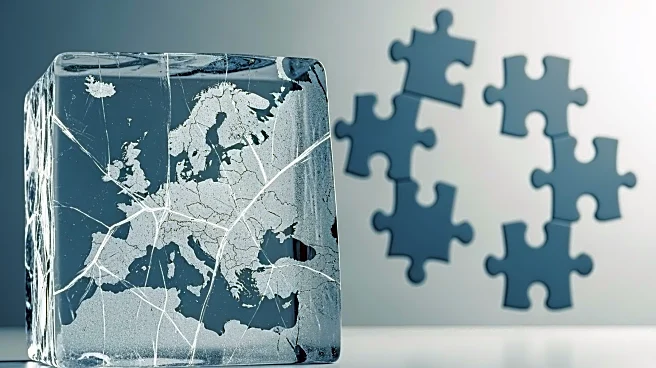What's Happening?
Recent advancements in genetic engineering have brought the idea of reviving Neanderthals from the realm of science fiction to a potential reality. Scientists have decoded the complete Neanderthal genome,
revealing that modern humans carry up to 4% of Neanderthal DNA. This has sparked discussions about the feasibility of resurrecting an extinct hominin species. George Church, a genetics professor at Harvard, has proposed a method involving the integration of Neanderthal DNA fragments into human stem cells. However, this concept raises significant ethical and scientific challenges. The process would require editing existing human cells, as no living Neanderthal cells exist. Current technology, such as CRISPR, can make limited genetic changes, but the possibility of creating a Neanderthal genome within 20 years is theoretically plausible.
Why It's Important?
The potential revival of Neanderthals poses profound ethical and legal questions. Creating a Neanderthal would introduce a being closely related to humans but genetically isolated and socially alienated. This raises concerns about the moral implications of bringing such a being into the modern world, where it would lack cultural context and community. Additionally, the scientific community questions the validity and purpose of such an endeavor, as it may not provide significant insights into Neanderthal life. The risk of private, unregulated biotech ventures pursuing de-extinction projects for profit or vanity further complicates the issue. Without global ethical agreements and legal frameworks, the rapid advancement of biotechnology may outpace bioethics, leading to unforeseen consequences.
What's Next?
While the theoretical possibility of reviving Neanderthals exists, significant ethical and legal barriers remain. In the United States and much of Europe, genome editing of human embryos is heavily restricted. However, these laws are not universal, and there is a risk that private entities may pursue such projects in regions with less stringent regulations. The scientific community emphasizes the need for global ethical agreements and legal frameworks to address the potential risks associated with de-extinction projects. As biotechnology continues to advance, it is crucial to ensure that ethical considerations keep pace with scientific developments to prevent potential misuse.
Beyond the Headlines
The discussion around reviving Neanderthals highlights broader ethical and cultural implications of genetic engineering. It raises questions about the limits of scientific exploration and the responsibilities of scientists in pursuing controversial projects. The potential creation of a Neanderthal would challenge our understanding of humanity and the ethical boundaries of scientific research. It also underscores the need for public discourse and policy development to address the complex issues surrounding de-extinction and genetic engineering. As technology evolves, society must grapple with the moral and cultural dimensions of bringing extinct species back to life.













